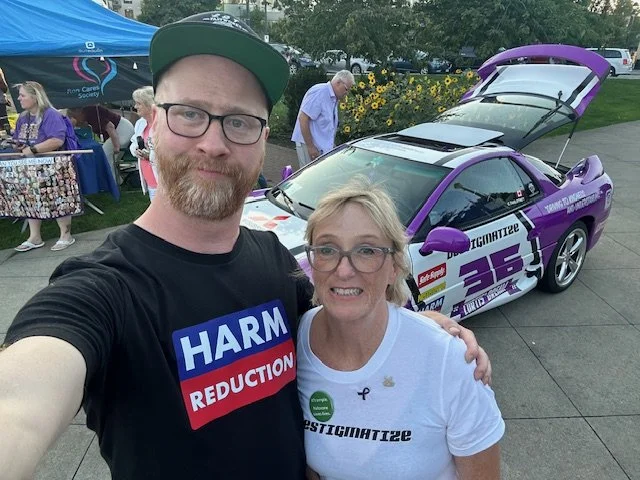August 2025 MSTH Advocate Spotlight
At MSTH, we highlight some of our members and advocates from across Canada.
Our members do incredible work in their communities to raise awareness of the drug poisoning crisis in different ways.
Some facilitate our peer support groups Holding Hope and our peer bereavement support groups Healing Hearts, while others work in advocacy for MSTH in their communities and provinces.
To find out how YOU can become more involved please connect with us at info@momsstoptheharm.com
Debbie Tablotney, Richmond, BC.
Why did you become a member of Moms Stop The Harm?
At the time, I noticed my son was experiencing negative consequences with his consumption of stimulants like cocaine and alcohol. He would also display signs of paranoia and hallucinations which were concerning. We had explored many community resources and professional organizations that offered treatment options, but I became increasingly frustrated by the barriers we encountered in getting him the help he needed.
There was growing concern about the toxic and unpredictable drug supply in the Lower Mainland. He had already survived a couple of overdoses when I attended an event at Sunset Beach, where flags were placed by members of Moms Stop the Harm (MSTH) to represent lives lost to drug overdoses. I didn’t want my son to become one of those flags. That day, I signed up for Moms Stop the Harm. I met a few people at the event, and we shared our stories and exchanged contact information.
Tragically, about a year later—on December 14, 2022—my son passed away from a toxic drug overdose. Unfortunately he was alone playing video games at the time of his last overdose in his bedroom. In the aftermath, I reached out to one of the people I had met at the MSTH event. Speaking with someone who had gone through a similar experience brought me comfort and connection.
What do you want people to know about Moms Stop the Harm?
When my son passed, I said immediately that I would "paint Richmond purple." I wanted to raise awareness about the toxic drug crisis and provide information and support to community members—both to advocate for better access to care and to help people understand how they and their loved ones can stay safe.
Our family quickly mobilized. With the help of my son’s friends, community members, and MSTH supporters, we restored his old, beloved Mitsubishi 3000 GT which had been sitting in our driveway. We raised funds to get it running and wrapped it in purple with elements we felt necessary to address the toxic drug crisis we find ourselves facing. We named it Curtis’ Dream Car.
Since then, we have formed Curtis’s Dream Society. The purpose of the society is to use the car as a platform to promote awareness of the toxic drug crisis and to educate communities on how they can support loved ones in accessing information, resources, and services. From the back of the car, we distribute harm reduction materials and Naloxone kits. We have also been using the opportunity to speak to universities and organizations that are looking to learn from our lived experience with my Son.
The car is eye-catching, especially to young men, and it draws them in—giving us a natural opportunity to start conversations. This approach has been highly effective in building connections, and we’ve been invited to bring the car to events throughout the Lower Mainland.
What does being an advocate mean to you?
I want people—especially families like mine—to know that Moms Stop the Harm is here to provide support and information. When someone is using substances that put them at risk or experiencing a mental health issue, they deserve kindness and understanding In moments of crisis not exclusion and shame. They need to be able to access the compassionate and evidence based care that they deserve. MSTH offers that support through a network of volunteers who have lived experience and truly understand.
It’s also important for people to know that Moms Stop the Harm has been a driving force in advocating at the municipal, provincial, and federal levels for real change: better access to health care, a regulated safe supply, and harm reduction services. Their work is saving lives.

